Select Language
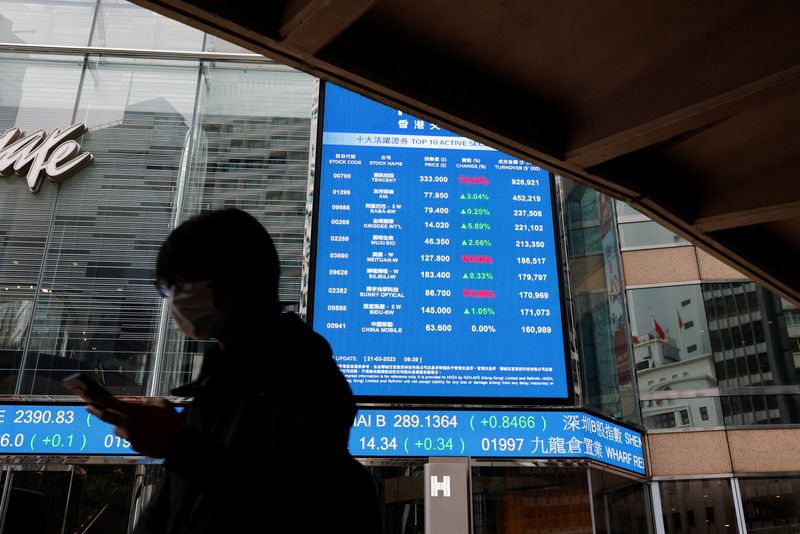
By Stella Qiu
SYDNEY (Reuters) - Asian shares fell and the dollar was firm on Monday as investors looked ahead to a week packed with central bank meetings including the Federal Reserve and the Bank of Japan, which will be closely scrutinised for the global monetary policy outlook.
S&P 500 futures advanced 0.2% while Nasdaq futures edged 0.1% higher.
MSCI's broadest index of Asia-Pacific shares outside Japan fell 0.5%, with Australia's resources-heavy share market dropping 0.7% and Hong Kong's Hang Seng index off 0.7%.
Japan's Nikkei is closed for a holiday.
The spotlight in the Asian morning fell on Chinese property developers listed in Hong Kong, which tumbled 2% in part due to a 20% plunge in China Evergrande (HK:3333) Group after police in southern China detained some staff at its wealth management unit, the latest trouble to hit the embattled property firm.
Also, Chinese trust firm Zhongrong International Trust Co, with exposure to Chinese property developers, said over the weekend it was unable to make payments on some trust products on time.
Sentiment in Asia had improved last week after news of more policy support from Beijing and better-than-expected Chinese data added to signs the world's second-largest economy could be starting to stabilise from a months-long slowdown.
"Despite the encouraging sign of stabilization, the property market continues to be the missing puzzle piece in the economic picture," said Tommy Xie, head of Greater China Research at OCBC Bank.
"The on-the-ground feedback indicates a rise in property viewing activities; however, most prospective buyers are not in a hurry to finalize deals due to the increasing supply of apartments post relaxation."
This week, global central banks will take centre stage, with five of those overseeing the 10 most heavily traded currencies - including the U.S. Federal Reserve - holding rate-setting meetings, plus a swathe of emerging market ones as well.
Markets are fully priced for a pause from the Fed on Wednesday, so the focus will be on the updated economic and rates projections, as well as what Chair Jerome Powell says about the future. They see about 80 basis points of cuts next year.
"In theory, the FOMC meeting should be a low-volatility affair, but it is a risk that needs to be managed," said Chris Weston, head of research at Pepperstone.
"We should see the median projection for the 2023 fed funds rate remaining at 5.6%, offering the bank the flexibility to hike again in November, should the data warrant it."
Weston added that if the Fed revises up the rate projections for 2024, that would see rate cuts being priced out, resulting in renewed interests in the U.S. dollar and downward pressure on global shares.
On Thursday, Bank of England is tipped to hike for the 15th time and take benchmark borrowing costs to 5.5%, while Sweden's Riksbank is seen hiking by 25 basis points to 4%.
Bank of Japan is the key risk event on Friday. Markets are looking for any signs that the BOJ could be moving away from its ultra-loose policy faster than previously thought, after recent comments by Governor Kazuo Ueda sent yields much higher.
Last Friday, Wall Street ended sharply lower as U.S. industrial labour action weighed on auto shares. Rising Treasury yields also pressured Amazon (NASDAQ:AMZN) and other megacap growth companies.
Cash Treasuries were not traded in Asia with Tokyo shut. Treasury yields edged higher on Friday, with the two-year above the 5% threshold, as futures price in higher rates for longer ahead of a the Fed's policy meeting this week.
In the currency markets, the U.S. dollar was still standing strong near its six-month top at 105.29 against a basket of major currencies.
The euro recovered 0.1% to $1.0673 in early Asia trade, after slumping to a 3-1/2 month low of $1.0629 last week as the European Central Bank signalled its rate hikes could be over.
Oil prices were higher, after hitting 10 month tops last Friday, stoking inflationary pressures. Brent crude futures rose 0.3% at $94.20 per barrel and U.S. West Texas Intermediate crude futures were up 0.4% at $91.14.
The gold price was 0.2% higher at $1,925.62 per ounce.

By Julian Luk
LONDON (Reuters) -Chile's Codelco is ending long-term contracts to sell copper concentrate to Chinese clients from 2025, bidding to broaden its product offering to them after evaluating its production outlook, five sources with direct knowledge of the matter said.
The sources said Codelco is aiming to replace exclusively copper concentrate deals with others that include concentrate and value-added intermediate products such as blister and anode which are derived from concentrate and can be turned into copper metal or cathode.
Some Chinese customers have protested against the changes, but will have to accept new contract negotiations that include intermediates because they will need Codelco's concentrates at a time when deficits are expected, the sources said.
The Chilean miner wants to restructure its sales strategy and agreements because of uncertainty about whether it can meet its contractual obligations, the sources said.
"Some measures adopted are due to the normal management of Codelco's commercial product portfolio and not to availability adjustments and/or lower production," Codelco said in response to a request for a comment.
"Codelco continually updates its contracts according to the prevailing dynamics in the market."
Operational problems at the state-owned miner saw its production slip last year to about 1.46 million metric tons, the lowest in around a quarter of a century and output has slipped further this year.
Codelco is expected to produce between 1.31 million to 1.35 million metric tons of copper a key material for the power and construction industries.
Output at the world's largest copper producer has been dropping despite $15 billion invested in flagship mines including El Teniente and Chuquicamata where costs have overrun significantly, according to an influential industry body.
The sources, all of whom have long-term contracts with Codelco, said they had been receiving termination notices from Codelco from July to August and that the company wanted to start new agreements with different terms.
Two of the sources said Codelco was ending their evergreen supply contracts from 2025. Evergreen contracts introduced by Codelco in 2018 are two-year and three-year deals which roll over annually, in which customers can be assured of certain amounts a year.
Codelco accounts for 29% of Chile's copper production. Chile's congressional committee in late August launched an investigation to review Codelco's corporate structure and project delays.
China is the world's biggest buyer of mined copper with its import volume accounting for over 60% of the world's total. The world's largest consumer of industrial metals bought 25.3 million tonnes of copper concentrates last year, according to International Copper Study Group.
The global copper concentrate market is expected to see a steep deficit during 2025-2027 as Asian and African smelters ramp up capacity, outpacing mine supply.

By Suban Abdulla
LONDON (Reuters) - Britain's main manufacturing trade body on Monday cut its forecast for the sector's growth for this year and next, citing a sharp fall in factory output and economic uncertainty.
Trade body Make UK expects output to fall 0.5% in 2023, down from its June forecast for a 0.3% drop, and grow just 0.5% in 2024.
"Manufacturers are seeing a very sharp slowdown in activity as the potent cocktail of rising interest rates, cost of living and slowing overseas markets bites hard," Verity Davidge, policy director at Make UK said.
The sluggish factory outlook was in line with the wider picture for Britain's economy, which has so far this year avoided a recession and which Make UK expects will grow 0.5% this year and 0.4% in 2024.
Official figures last week showed the country's economy shrank by a sharper-than-expected 0.5% in July after public sector strikes and unusually rainy weather weighed on output.
The Bank of England is expected to raise interest rates for the 15th time in a row on Thursday, while consumer price inflation data due on Wednesday is likely to show a rise to 7.1% in August from July's 6.8%, according to a Reuters poll of economists.
"There's an argument here that says the Bank of England's plan to raise interest rates and stamp out inflation is working," Richard Austin, national head of manufacturing at BDO, which sponsors the survey, said.
"But it is the scale of the fall in the indicators this quarter that comes as a surprise and highlights the extent of the slowdown on UK manufacturing."
Make UK's quarterly survey said the balance for manufacturing output was the weakest performance for production since the last quarter in 2020, during the COVID-19 pandemic.
Manufacturers reported the steepest fall in hiring plans since the EU referendum in 2016, and the lowest order growth since Q4 in 2020.
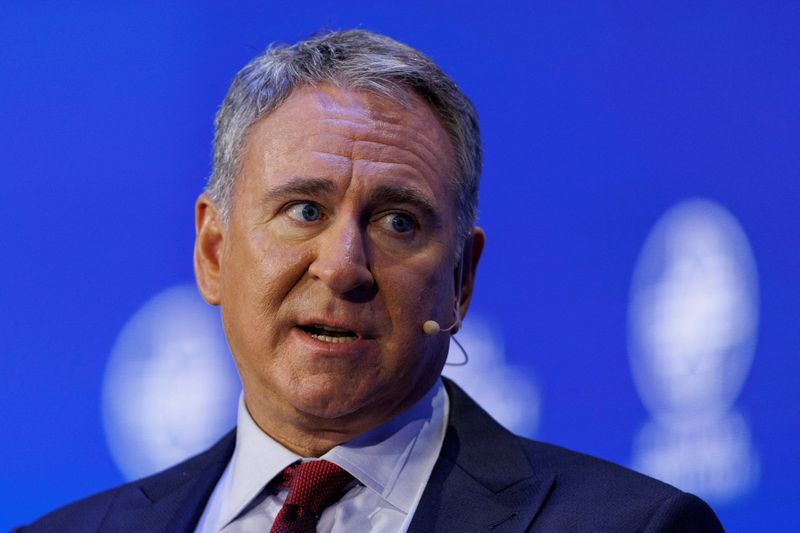
NEW YORK/BANGALORE (Reuters) - Billionaire investor Ken Griffin, founder of U.S. hedge fund Citadel, said on Thursday that he has some doubts about the continuity of the markets rally and is concerned about the about the U.S. fiscal situation.
"I'm a bit anxious that this rally can continue," he said in an interview on CNBC. "I like to believe that this rally has legs. I'm a bit anxious. We're sort of in the seventh or eighth inning of this rally, but part of it has been the soft landing story."
The S&P 500 stock index is up 16.8% this year, in a rally mainly driven by optimism around artificial intelligence.
Griffin said the Federal Reserve is likely close to the end of the interest rate hiking cycle in its battle to tame inflation. "There's a small chance of one more increase later this year," he said.
Still, he said it is unclear when Fed chair Jerome Powell will be able to cut rates because of some ongoing stimulus measures.
"He's showing up in a fight with both of his hands tied behind his back because D.C. is just on a different agenda than he is," Citadel's founder said. "He's trying to prudently slow the economy, bring inflation back down and really engineer the whole soft landing."
Gasoline prices are also a concern to inflation, as prices have risen.
Griffin considered it is unlikely that inflation will come down to the Fed's 2% target. "It only will be at 2% if the economy is in a real recession."
Citadel, which invests $61 billion for clients, became the most successful hedge fund of all time last year when it earned $16 billion.
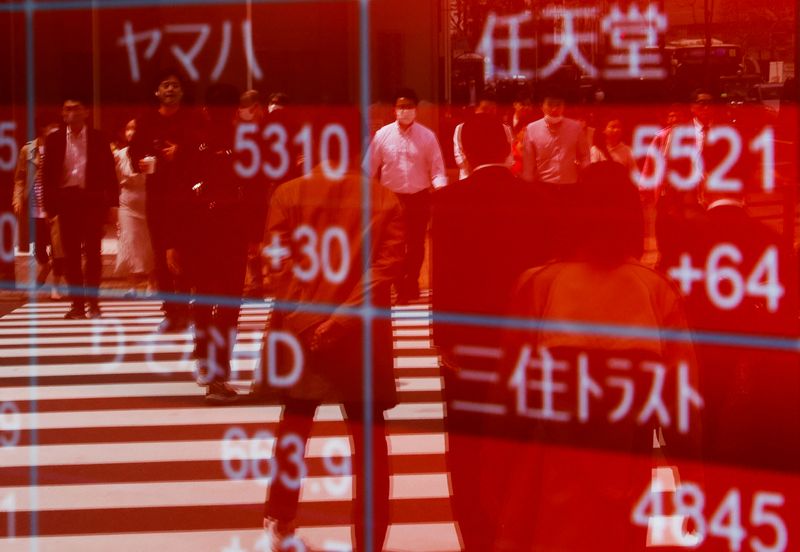
By Kevin Buckland
TOKYO (Reuters) - Asian stocks rose strongly on Friday, extending a global equity rally, after better-than-expected Chinese economic data added to the good vibes from expectations that tightening campaigns by the world's biggest central banks were close to over.
The dollar stuck close to a six-month peak from overnight against major peers, buoyed by robust U.S. economic data, while the euro sagged following the European Central Bank's signal that Thursday's rate hike was probably the last this cycle.
Crude oil hit a fresh 10-month top.
MSCI's broadest index of Asia-Pacific shares rallied 0.84%.
Japan's Nikkei jumped 1.33% to a two-month high.
Hong Kong's Hang Seng added 1.2%, and mainland Chinese blue chips rose 0.2%, flipping from early small losses.
Australia's stock benchmark surged 1.75%.
U.S. S&P 500 futures pointed to a 0.17% rise, after the cash index rallied 0.84% on Thursday.
Chinese gauges of retail sales and industrial output for August handily topped economists forecasts, providing additional tailwinds from the central bank's decision overnight to cut banks' reserve ratio requirements for a second time this year.
It was not all blue skies though, with data earlier in the day showing the biggest drop in new home prices in 10 months - another reminder of the property sector's struggles, after Moody's (NYSE:MCO) cut the sector's outlook to negative on Thursday.
"It's certainly not a definitive turning point, but perhaps we're seeing green shoots in China's economy," said Kyle Rodda, senior market analyst at brokerage firm Capital.com, calling the retail sales figures "particularly heartening."
"It's a nice little shot in the arm to end the week" for stock markets, but "I think investors will be searching for more in terms of support from the central government, and ultimately, more fiscal support is what's required to boost demand," he said.
The overall improving economic outlook bolstered the Chinese yuan, which gained about 0.3% to 7.2709 per dollar in offshore markets.
Australia's dollar, which often trades as a proxy for the country's top trading partner, rose 0.3% to $0.6460.
However, a gauge of the U.S. dollar against six of its biggest developed-market peers stuck close to the six-month peak it reached overnight, buoyed primarily by the euro's steep overnight slide.
The so-called U.S. dollar index edged down 0.08% to 105.33, after hitting the highest since early March at 105.43 on Thursday.
The euro was flat at $1.0643, languishing near the overnight low of $1.0632, the lowest level since March 20.
The European Central Bank (ECB) hiked its key interest rate to a record 4% on Thursday, but hinted that this latest increase would likely be its last.
Meanwhile, U.S. data showed producer prices increased by the most in more than a year in August and retail sales also rose more than expected. But both of those figures were swelled by higher gasoline prices.
As a result, traders stuck to bets for the Federal Reserve to skip a rate hike next week, in what might be the end of the tightening cycle.
"A dovish ECB rate hike contrasted against a U.S. economy ticking all the boxes to retain its Goldilocks status into year-end," said Tony Sycamore, a market analyst at IG.
The dollar index is on track for a ninth straight weekly advance, the longest run in nine years.
Whether it can extend that to a tenth week depends of Fed Chair Jerome Powell's tone after the central bank policy decision on Sept. 20, Sycamore said.
In energy markets, crude oil extended its rise in Asia trading, touching fresh highs since November.
Brent crude rose 0.5% to $94.16, while the U.S. West Texas Intermediate crude (WTI) was up 0.6% at $90.74.
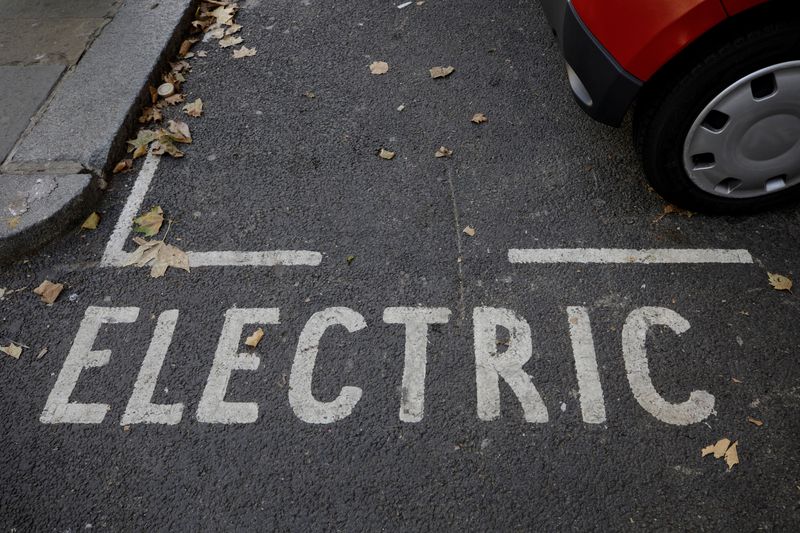
By Nick Carey
LONDON (Reuters) - Spurred by falling battery prices, electric vehicles could hit price parity with fossil-fuel models in Europe in 2024 and the U.S. market in 2026, and account for two thirds of global car sales by 2030, according to new research.
A report by the Rocky Mountain Institute (RMI) on Thursday predicts battery costs should halve this decade, from $151 per kilowatt hour (kWh) in 2022 to between $60 and $90 per kWh, making EVs "for the first time as cheap to buy as petrol cars in every market by 2030 as well as cheaper to run."
Batteries are expensive and account for around 40% of an EV's price tag, a cost that has so far made them unaffordable for many consumers.
But those prices are steadily coming down as carmakers invest in new battery chemistries, materials and software to make more efficient EVs, RMI senior principal Kingsmill Bond told Reuters.
According to RMI's analysis, the rapid growth of electric models in Europe and China "implies that EV sales will increase at least six-fold by 2030, to enjoy a market share of 62% to 86% of sales."
EV sales in the European Union jumped almost 61% in July versus the same month in 2022, accounting for 13.6% of all car sales.
The European Union aims to ban the sale of new fossil-fuel models from 2035.
The United States has not yet committed to a date for ending sales of combustion engine models, but California and New York are both targeting 2035 to switch to selling only zero-emission models.
"It's not radical whatsoever to see the continued exponential growth of electric vehicles," RMI's Bond told Reuters. "This is what one should expect."
According to the RMI research, oil demand for cars peaked in 2019 and will fall by at least 1 million barrels per day every year after 2030.
Research released concurrently from Exeter University's Economics of Energy Innovation and System Transition (EEIST) project also predicts exponential growth in EV sales.
It suggests EVs will reach a "tipping point" in price parity with fossil-fuel models as early as 2024 in Europe, 2025 in China, 2026 in the U.S. and 2027 in India "for medium-sized cars, and even sooner for smaller vehicles."
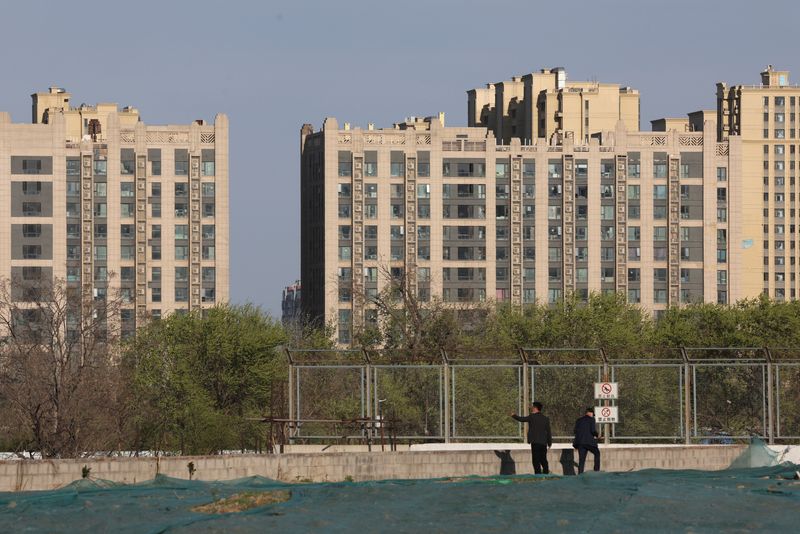
BEIJING (Reuters) -China's new home prices fell at the fastest pace in 10 months in August, official data showed on Friday, as conditions in the property sector continued to worsen despite a recent flurry of support measures.
The 0.3% fall month-on-month came after a 0.2% drop in July, according to Reuters calculations based on National Bureau of Statistics (NBS) data. Prices were down 0.1% from a year earlier, after a 0.1% decline in July.
China has in recent weeks delivered a raft of measures to boost home buying sentiment, including easing some borrowing rules, and relaxing home purchasing curbs in some cities.
These policies have given major cities like Beijing a boost in new home sales, but some worry they might be short-lived and could potentially dry up demand in smaller cities.
China's central bank said on Thursday it would cut the amount of cash that banks must hold as reserves, its second such easing this year.
"The more material risks in the near-term come from some property developers and financial institutions, and a small RRR cut could do very little to help," said Nomura in a research note on Friday.
Beijing may have to introduce more aggressive property easing measures to deliver a real recovery, analysts say
Authorities may lift almost all restrictions on home transactions, invest more in the urban renovation programme, speed up infrastructure spending and restructure local government debt, said Nomura.
Moody's (NYSE:MCO) on Thursday cut China's property sector outlook to negative from stable, citing economic growth challenges, which the rating's agency said will dampen sales despite government support.
China's property crisis is seen as one of the biggest stumbling blocks to a sustainable economic recovery, with rising risks of default among private developers threatening to imperil the country's financial and economic stability.
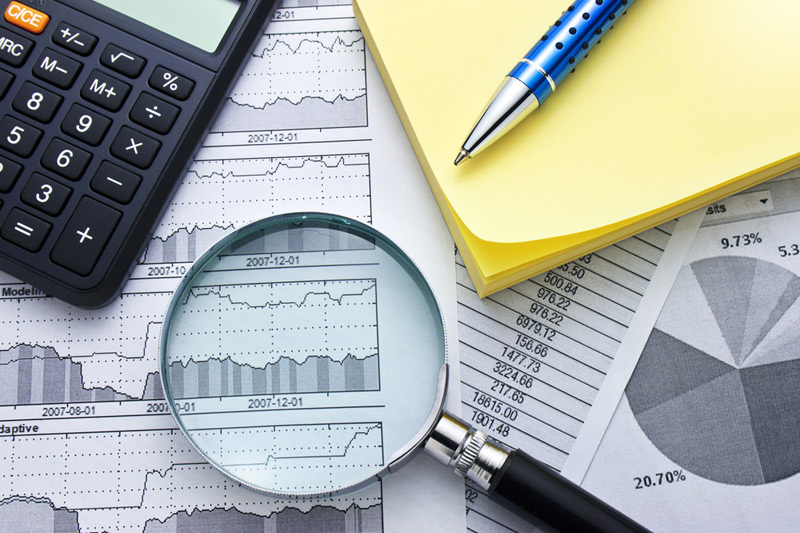
The U.S. government's borrowing is set to continue with an estimated issuance of an additional $450 billion in Treasury bills during the fourth quarter of 2023, as projected by Barclays on Thursday. This forecast is based on the intent of the Treasury Department to end the year with a cash deposit of $750 billion at the Federal Reserve.
This upcoming wave of Treasury bills follows a period since June, during which money-market funds absorbed over $1.6 trillion in supply. Analysts predict that the incoming supply will be readily absorbed, given the record inflows into money-market funds this year. As of the start of September, government fund inflows have surged to nearly $4.7 billion out of a total asset pool of about $5.6 trillion.
The proportion of bills as part of outstanding government debt has increased to around 22.4% as of August, according to Barclays. This is the highest level seen since the beginning of the COVID-19 pandemic and exceeds the average range of 15%-20% observed since the 1980s. This surge in Treasury bill issuance began following the U.S. debt-ceiling deal in June.
Despite this increase, there has been no shortage of buyers at bill auctions. The yield on a 3-month Treasury bill reached a 22-year high of 5.46% on Thursday, indicating strong demand. Since June 1, demand for 3-month auctions has surpassed supply by approximately three times, while demand for 4-week, 8-week, and 6-month bill issuance has remained strong.
Barclays strategist Joseph Abate anticipates that this trend will continue, driven by expectations of a Federal Reserve rate hike in November and steady policy through September 2024. He also foresees sustained demand from money-market funds and individual investors who are willing to navigate the government’s TreasuryDirect website for yields around 5%.
In related financial news, stock markets showed upward momentum on Thursday, with the Dow Jones Industrial Average, the S&P 500 index, and the Nasdaq Composite Index all recording gains since Monday.
This article was generated with the support of AI and reviewed by an editor. For more information see our T&C.
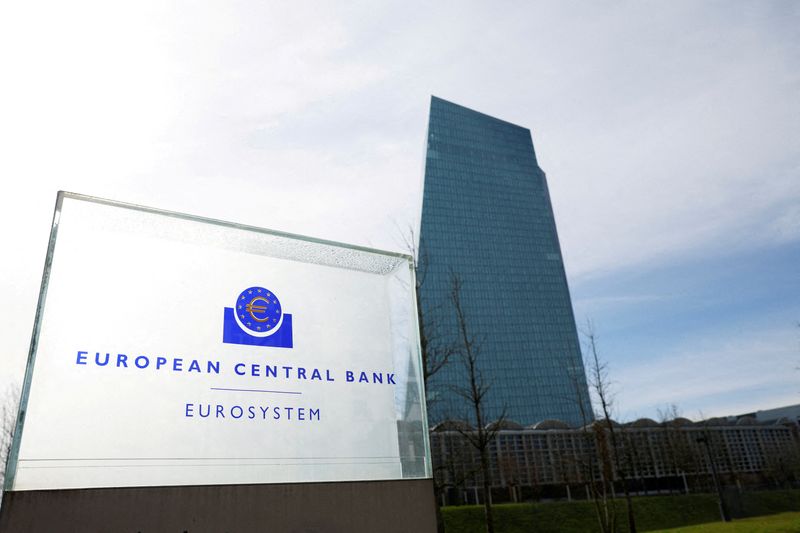
By Francesco Canepa and Balazs Koranyi
FRANKFURT (Reuters) - The European Central Bank is set to decide on Thursday whether to raise its key interest rate to a record peak in what should be its final step in the fight against inflation, or take a break as the economy deteriorates.
The central bank for the 20 countries that share the euro faces a dilemma. Even after nine consecutive rate hikes, prices are rising at more than twice its 2% target and are not expected to slow to that level for another two years.
But higher borrowing costs across much of the world and China's economic malaise are taking a toll on economic growth, with a recession in the euro zone now a distinct possibility.
Analysts and investors had been leaning towards a pause in the ECB's rate increases until Reuters reported on Tuesday that the central bank was set to raise its forecast for inflation next year to more than 3%, bolstering the argument for a hike.
Policymakers saw the 2024 projection as crucial to determine whether inflation, currently still above 5%, was heading back to target or risked getting stuck at a higher level for too long.
"The inflation momentum is simply too strong for the ECB to pause," Danske Bank economist Piet Haines Christiansen said.
A majority of economists in a Sept 5-7 Reuters poll had expected the ECB to hold rates steady this week but with the mood shifting, money markets now assign a 63% chance of a hike, expected to be the last in a cycle that began in July 2022. [0#ECBWATCH].
In contrast, markets have fully priced in unchanged rates at next week's meeting of the U.S. Federal Reserve, which started raising rates earlier and has moved higher than the ECB.
An increase of 25 basis points on Thursday would take the rate the ECB pays on bank deposits to 4.0%, the highest level since the euro was launched in 1999.
Just 14 months ago, that rate was languishing at a record low of minus 0.5%, meaning banks had to pay to park their cash securely at the central bank.
UniCredit analysts said Thursday was a now-or-never moment for another rise in borrowing costs.
"If the ECB does not hike, it will sound hawkish and will try to convince financial markets that rates could be moved higher at one of its subsequent meetings," they said in a note.
"We doubt that this will be possible and expect that a decision to hold rates steady today would mark the end of the tightening cycle."
NEW FORECASTS
Supporters of a hike this week are likely to argue it is needed because inflation, including underlying measures that strip out volatile components, remains too high, with a recent surge in energy prices threatening a new acceleration.
But the brisk tightening cycle - twice as steep as normally envisaged by the ECB's own stress tests of the banking sector - has already left its mark on the euro zone economy.
With the manufacturing sector, which typically needs more capital to operate, already suffering as a result of higher borrowing costs, lending to companies and households has fallen off a cliff.
Services has now also started to struggle following a brief post-pandemic boom in tourism.
The euro zone's biggest economy, Germany, is bearing the brunt of an industrial slump and heading for recession, according to several forecasts.
On Thursday, the ECB is also expected to cuts its growth projections for this year and next, leading some economists to argue it should hold off from raising rates this month.
"While core inflation is only showing tentative signs of easing, the growth outlook has darkened quickly, implying less need for tightening," Natixis economist Dirk Schumacher said.
Once its rate increases end, the ECB is likely to begin a debate on mopping up more of the cash it pumped into the banking system through various stimulus schemes over the last decade, although no decision on that matter was expected this week.
The ECB will announce its rate decision at 1215 GMT. ECB President Christine Lagarde will hold a news conference at 1245 GMT.
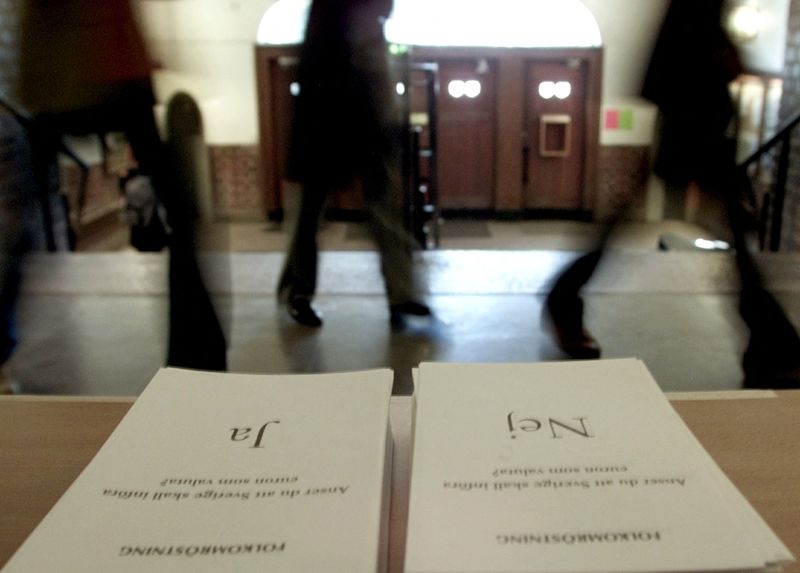
By Simon Johnson
STOCKHOLM (Reuters) - Need a cheap, reliable second-hand car? Think Sweden, where a nosedive in the local crown currency over the past 18 months is proving a blessing for used-car dealers and other exporters.
But 20 years after Swedes voted in a referendum to stay out of Europe's single currency, the crown's 17.5% slide against the euro is not making everyone happy. Many in a nation used to high living standards are being forced to tighten their belts.
"Many foreign car dealers think there is a sale on in Sweden," Joachim Agren, senior key account manager at the Swedish branch of BCA, Europe's largest vehicle remarketing company according to its website, told Reuters. He said overseas buyers now account for the majority of its sales at auction, doubling their 30% share of recent years.
Purchasing power abroad has tumbled with the currency. In the second quarter, Swedes were the 12th biggest buyers of property in Spain, according to Registradores de Espania - four places lower than two years earlier and behind the Chinese.
Companies like KP Energy, which imports solar panels to sell to trade buyers, cite the damaging effects of higher purchase costs and rising interest rates, which hit household spending.
"It impacts us a huge amount when the crown weakens against the euro and when the demand picture changes," its CEO Filip Wiqvist said.
KP Energy had forecast strong growth this year after the market doubled in size in 2022. Now, it expects a contraction, even with Sweden and the European Union pursuing ambitious climate goals.
"The green transition is going to going to slow radically in the short term, with the euro-crown one of the reasons," Wiqvist said.
The weaker currency did help lift Sweden's exports by 6% in the year to July, despite slower global growth.
But currency volatility makes planning tricky even for exporters, said Jan Soderstrom, CEO of Quintus Technologies, which makes advanced presses used in sectors like aerospace and consumer electronics.
Higher import prices as a result of the crown's slide could also mean the central bank must keep interest rates higher for longer to fight inflation, piling pain on households and businesses struggling with loan repayment costs.
Another hike to 4.0% on Sept. 21 is widely expectedand banking group Nordea says another could come in November before policy tightening ends.
That could deepen and lengthen a downturn the EU already predicts will make Sweden one of the bloc's worst-performing economies this year.
"The Riksbank is between a rock and a hard place. On the one hand they want to get inflation down ... on the other hand they don't want to crash the economy," Nordea Chief Economist Annika Winsth said.
MYSTERY
Swedes feeling the pinch have warmed somewhat to the euro in recent months, though a majority want to stick with the crown.
A Demoskop poll this week showed 42% would vote "No" to joining the euro, while 34% would support it. On Sept. 14, 2003, 55.9% voted to reject membership, and no major party is pushing for a new referendum.
But why the crown has lost around 30% of its value against the single currency over the last 10 years is unclear.
Sweden's economy is strong, state finances are healthy - government debt is among the lowest in the EU - and its well-capitalized banks are among the region's most profitable.
In June, accounting firm KPMG said the crown was "mysteriously weak".
Analysts suggest a number of factors.
Like many central banks, the Swedish Riksbank's main policy rate was at zero or below from 2014 to 2022 and in 2016 it even threatened to intervene in the foreign exchange market to weaken the crown.
While the rate has risen to 3.75%, in line with the European Central Bank's, markets may still perceive the Riksbank is dovish, SEB Senior Economist Robert Bergqvist said.
The shocks of the 2008-9 global financial crisis, COVID-19 and the war in Ukraine may also have encouraged investors towards traditional safe-haven currencies.
The Riksbank's asset purchases in recent years have made crown securities less liquid, reducing their appeal for foreign investors. Uncertainty around Sweden's accession to NATO - prompted by Russia's invasion of Ukraine and currently blocked by Turkey - could also be a negative factor.
Sweden's real estate market, burdened by rising interest rates and heavy debts is a worry, although the Riksbank says there is little risk to financial stability.
It also says an economic slowdown will not be too deep, after Sweden's economy outperformed its European peers during the pandemic.
"If you look at pricing of bank equity or credit default swaps of the banks ... it doesn't seem to price that kind of risk on the Swedish economy, just on the exchange rate," central bank deputy governor Martin Floden said earlier this month.
Believing the crown is around 20% undervalued, the Riksbank has hedged its own foreign currency exposure in anticipation of future strengthening.
"We and many others are convinced the crown will strengthen at some time, but we would like to see it happen soon rather than over the long term," Floden said.

